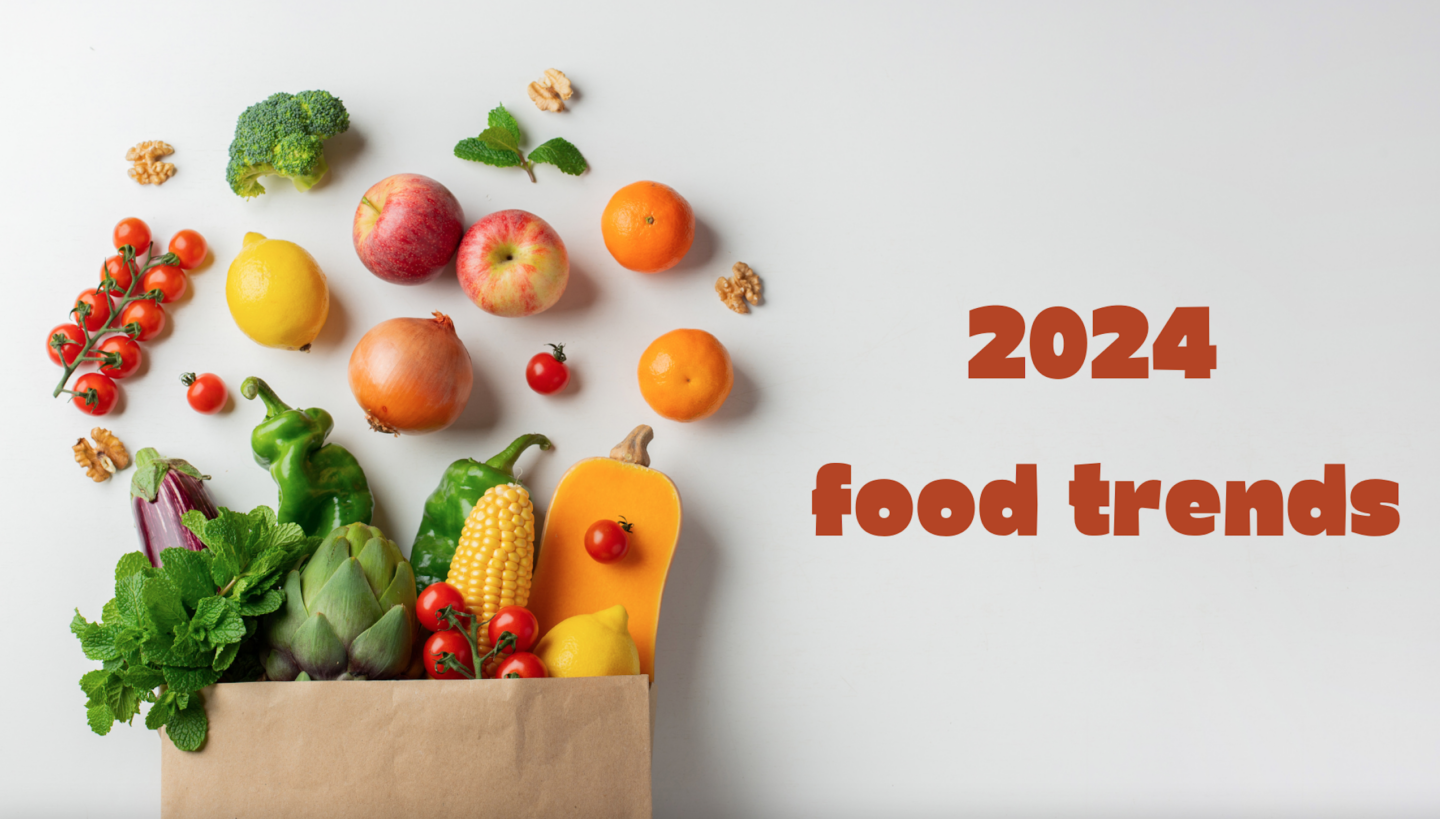
The Future of Our Plates. As we step into 2024, the culinary world is buzzing with an array of food trends shaped by global influences, local needs, and the ever-evolving consumer palate. From ancient grains to zero waste, let’s explore what’s cooking in the world of food trends.
A is for Ancient Grains: The spotlight is on grains like spelt, millet, and quinoa. These grains have remained largely unchanged over centuries and are gaining popularity for their nutritional benefits. While they can be pricier and harder to find, they’re not always superior to traditional whole grains.
B for Beige Staples: Keto continues to trend, with 12.9 billion views on social media. Expect to see pasta and noodles made from innovative flours like chickpea, alongside a resurgence of simple comforts like sliced white bread (over sourdough!) and double carb dishes.
C for Cost-Conscious Consumer: With rising living costs, taste and affordability are key. Consumers are looking for budget-friendly yet delicious food options.
D for Dazzling Drinks: Cocktails and mocktails are getting a social media makeover. Expect a rise in rum and tequila, along with hydration-focused soft and sports drinks.
E for Energy-Saving Meals: In an era of soaring energy bills, energy-efficient cooking methods like air fryers, slow cookers, and microwaves are in vogue. No-cook or minimal-cook dishes like salads are also on the rise.
F for Faux Fish: Plant-based seafood alternatives are emerging, though they often come with higher salt content and less omega-3 than their marine counterparts.
G for Gut-Friendly Foods: There’s growing interest in prebiotics, probiotics, and fermented foods. However, focusing on fiber and the traditional 5-a-day might be more beneficial and easier to track.
H for Heritage Eating: Unprocessed, unrefined, and traditional foods are gaining traction. Expect more “free from additives” labels, but remember, local and traditional doesn’t always mean healthier.
I for Indulgent Breakfasts: Breakfast is getting a French twist with loaded and twisted croissants. Watch out for high levels of saturated fats, sugars, and salt.
J for Just Add Water: Dehydrated and freeze-dried products are becoming popular for their planet-friendly and waste-reducing qualities. They’re quick to prepare and energy-efficient.
K for Koji and Umami: Koji, a grain inoculated with fungus, is being used to create umami flavours in everything from main dishes to desserts. However, these often come with a high salt and fat content, so consume in moderation.
L for Labelling for the Planet: Expect to see more planet-friendly claims like “100% green energy.” However, clear and understandable messaging, like eating seasonally, might be more effective.
M for Menopause-Friendly Foods: While supplements are common, few foods target menopause specifically. Look for a focus on nutrients that help with common symptoms like fatigue.
N for Nostalgic Food: Comforting retro dishes are making a comeback. Think British classics like roast dinners and cheese on toast.
O for On the Menu: Korean and Japanese cuisines remain popular, with fusion dishes like miso spaghetti and Thai pizza gaining traction.
P for Positive and Personalised Nutrition: There’s a holistic approach to nutrition, focusing on adding beneficial foods like vegetables rather than just cutting calories.
Q for Quick Cooks: Air fryers, delivery boxes, meal kits, and simple recipes are in demand for their convenience.
R for Regenerative Food: This trend focuses on biodiversity and sustainable farming practices. Some restaurants are starting to highlight regeneratively farmed ingredients.
S for Swicy, Swalty, Swavoury: Expect unusual flavour pairings like blue cheese ice cream, challenging our taste buds in new ways.
T for Tinned Food: Budget-friendly, long shelf life, and no prep required – tinned foods are practical and versatile.
U for Unprocessed and Unpacked Foods: Simpler ingredient lists are in, but remember, not all ultra-processed foods are unhealthy. Most plant-based food alternatives fall into this category, including oat milk.
V for Vegan: The focus is shifting from fake meats to dishes where plants are the stars.
W for What to Sweeten With: With high free sugar intake, natural sweeteners like dates are becoming more popular.
X & Y for Extra Health Benefits and Younger for Longer Nutrition: Eating for life stages, such as pregnancy, and understanding how a healthy diet benefits overall health.
Z for Zero Waste: Upcycling food waste like potato peelings and coffee grounds is on the rise, but we still waste a significant amount of edible food each year.
As we navigate these trends, it’s important to remember that balance and moderation are key. Whether it’s embracing ancient grains or indulging in nostalgic foods, the future of food in 2024 is diverse, conscious, and exciting!
Find out more more on MyNutriWeb
